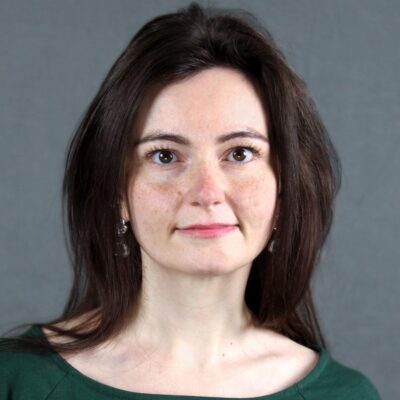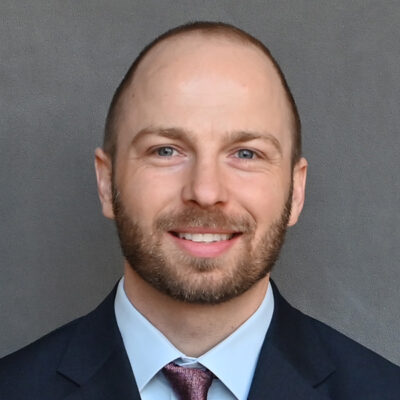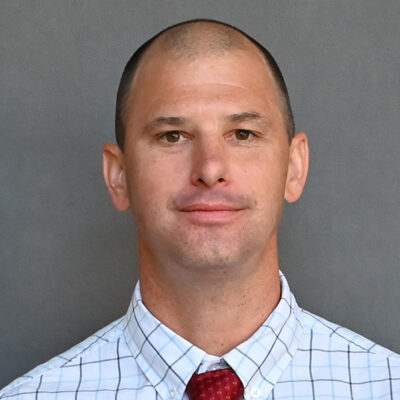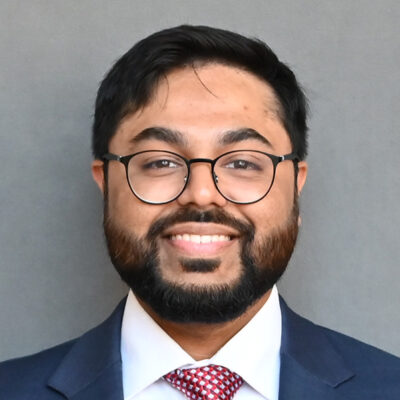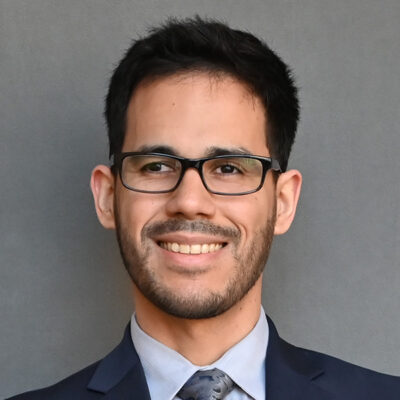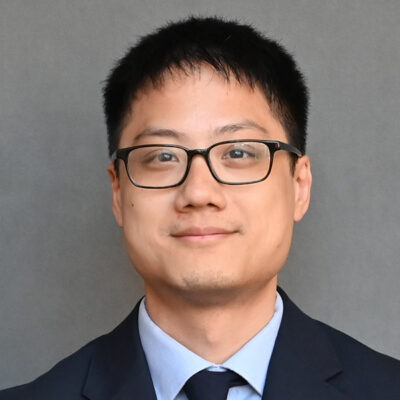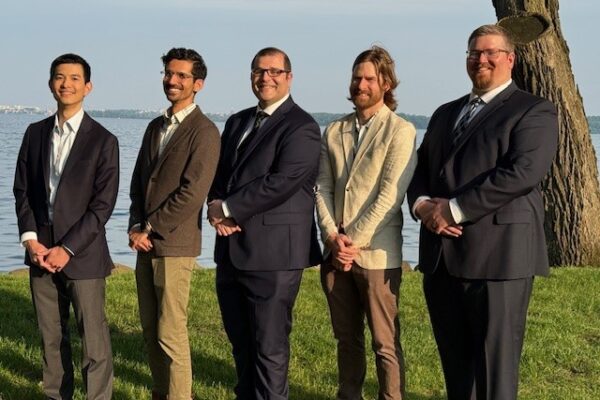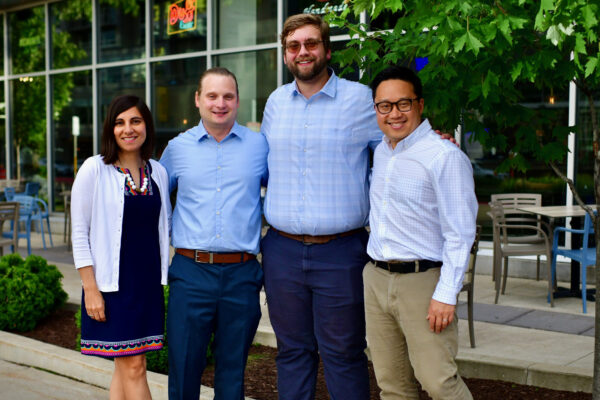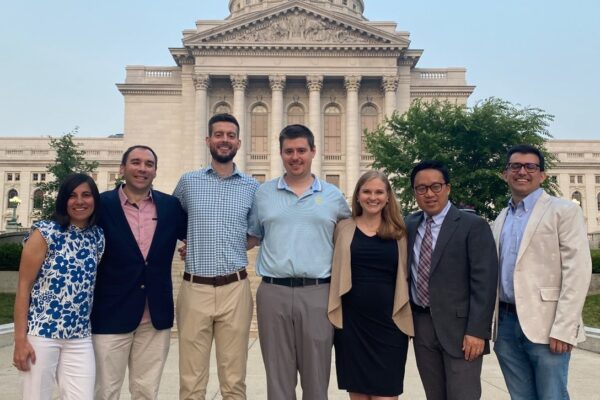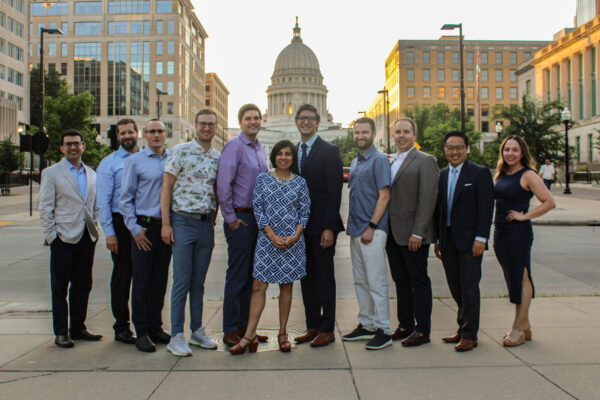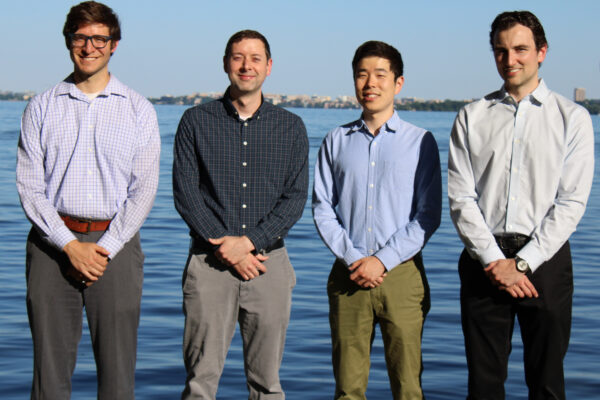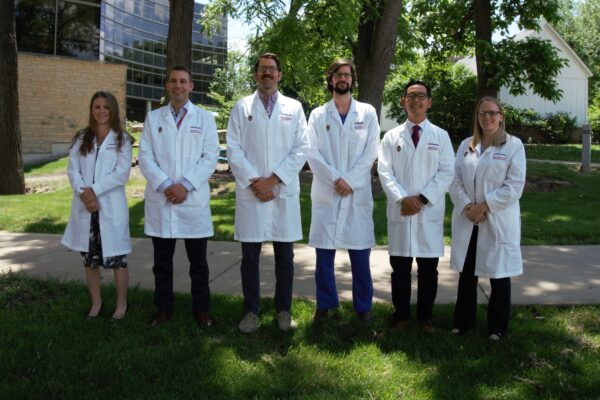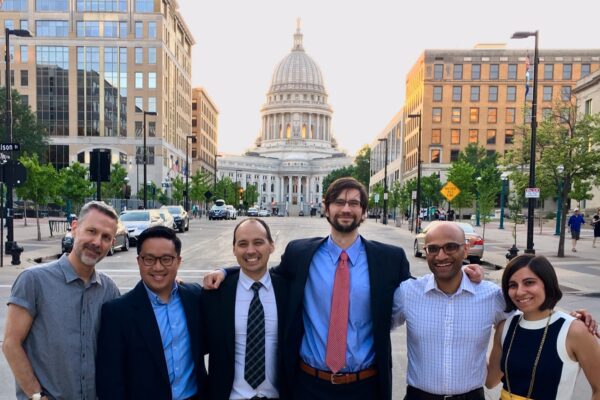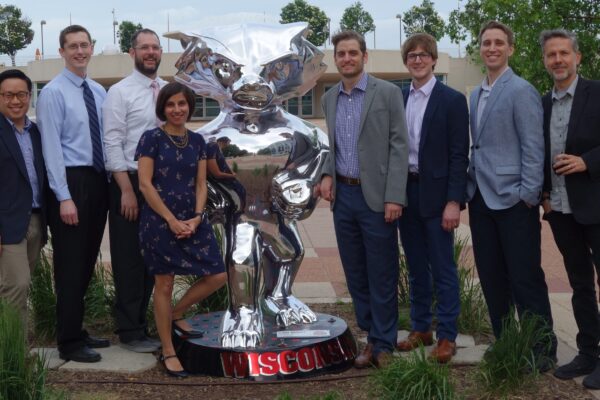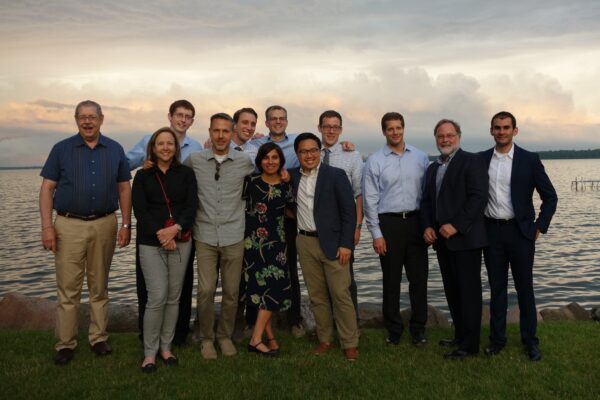The Neuroradiology Fellowship program emphasizes excellence in teaching, cutting edge technology, and superb case material.
For the clinical domains of brain, spine, head and neck, pediatric, and advanced imaging, our program provides training by renowned faculty. There are also diverse opportunities in areas such as translational research, artificial intelligence (AI) and informatics.
In addition to the first year that’s accredited by the American College of Graduate Medical Education (ACGME), applicants may be considered for a second year. This 12-month clinical instructorship will allow fellows the opportunity for additional subspecialty training.
 Program Snapshot
Program Snapshot
Available Positions: 5
Program Length: 1 year
Start Date: July 1, 2026
NRMP Match: Yes
Application: ERAS (Dec Cycle)
Accredited: Yes
Moonlighting: Available
Application Information
Requirements
- Must be a graduate of an ACGME or Royal College of Physicians and Surgeons of Canada accredited residency program in Diagnostic Radiology.
- Possess a Wisconsin medical license prior to beginning fellowship.
Application Process
The Neuroradiology Fellowship uses the Electronic Residency Application Service® (ERAS®) to facilitate the application process and follows the December cycle timeline. To submit an application, create an account through ERAS. The University of Wisconsin Hospital and Clinics Accreditation ID number is 4235621022. Applications must be received by January 3, 2025 to receive full consideration.
The fellowship adheres to the Society of Chairs of Academic Radiology Departments (SCARD) policies for the application and interview process.
In addition, the fellowship participates in the National Resident Matching Program (NRMP) Sub-Specialty Fellowship Match and complies with all specified dates including the Match Day in June. The Neuroradiology NRMP Program Code is 1779423F0.
The American Society of Neuroradiology (ASNR)’s Fellowship Portal provides a collection of resources to help with applying to and participating in a neuroradiology fellowship.
 Key Dates for
Key Dates for
2026-2027 Fellowship
ERAS Opens: June 5, 2024
App Submission Begins: Nov 13, 2024
App Review Begins: Dec 4, 2024
ERAS Deadline for Full Consideration:
Jan 3, 2025
Interviews: Jan 13 – Mar 31, 2025
Match Opens: Mar 12, 2025
Match Ranking Opens: Apr 16, 2025
Match Quota Deadline: May 21, 2025
ERAS Closes: May 31, 2025
Match Ranking Closes: June 4, 2025
Match Day: June 18, 2025
Start Date: July 1, 2026
Contact Information
Katie Ricks
Assistant Director of Education
kricks@uwhealth.org
Highlights & Benefits
Program Structure
- Fellows rotate through the six clinical services throughout the year. Those include Main Reading Room, Head and Neck Imaging, Pediatric Neuroradiology, Advanced Imaging, Neuroendovascular, and Late Shift/”Niner.”
- Through interdisciplinary conferences, fellows gain experience and skills necessary to become an expert in the multiple subspecialties of neuroradiology. The fellows prepare cases with faculty guidance at the following conferences:
- Clinical Neuroscience Conference
- Neuro-oncology Tumor Board
- Head and Neck Tumor Board
- Pediatric Tumor Board
- Spine Conference
- Epilepsy
- Fellows participate in educational conferences and opportunities such as a popular MR physics didactic series and a journal club.
- A broad spectrum of research opportunities are available to meet the fellowship research requirement, including:
- Clinical (case series, protocol development)
- Translational (fMRI, imaging applications)
- AI/Informatics
- Medical/Graduate education
- Basic science
- Public health/health disparities
Features of UW Hospital and Clinics
- Practice in University of Wisconsin Hospital and Clinics, a leading edge facility that is financially stable and outfitted to provide premier tertiary/quaternary care in a humane and welcoming environment.
- As a Level I Trauma Center, the hospital provides the highest level of care available to patients with life-threatening injuries. Trauma surgeons and other specialties are on-site, day and night.
- Verified by the American College of Surgeons, the American Family Children’s Hospital is a Level I Trauma Center for pediatric patients and offers advanced medical care for children from all of Wisconsin and beyond.
- At the William S. Middleton Memorial Veterans Hospital (VA), we serve those who have served our country.
- The first cancer research center founded by a university in the United States, Carbone Cancer Center is one of only 57 comprehensive cancer centers in the country according to the National Cancer Institute. The center’s greatest strength is its involvement in groundbreaking clinical trials.
- At the nationally certified Comprehensive Stroke Center, fellows will experience and help manage almost all types of stroke.
 20 Vacation &
20 Vacation &
Professional Days
 Competitive Salary &
Competitive Salary &
$2,500 Business Expense Fund
 Parental Leave
Parental Leave
 Home PACS to
Home PACS to
Enable Remote Work
 Funded Time for
Funded Time for
Research, CME & Meetings
 Moonlighting Opportunities
Moonlighting Opportunities
Inside Look
Watch the video for a sneak peek at the welcoming environment you will be part of as a fellow. Although filmed during the pandemic, the camaraderie remains a key element of the culture even if the masks aren’t as common!
Program Leadership & Team
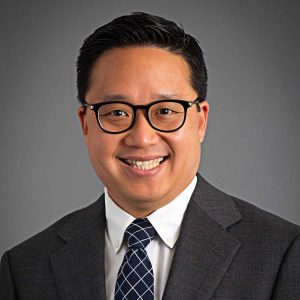 John-Paul (JP) Yu, MD, PhD
John-Paul (JP) Yu, MD, PhD
Program Director
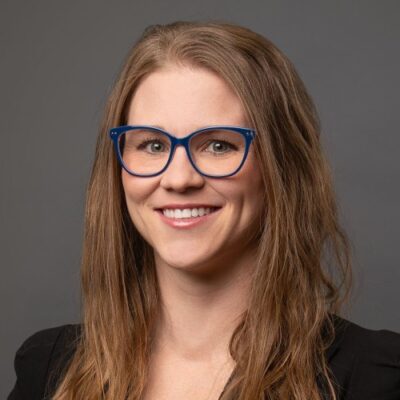 Kelly Capel, MD
Kelly Capel, MD
Associate Director
Neuroradiology Section
As a fellow, you’ll be a key member of the Neuroradiology section, which includes 15 subspecialty fellowship-trained, full-time, part-time and emeritus faculty, which includes multiple past Presidents of the American Society of Neuroradiology (ASNR).
The section provides neuroradiology services for the 592-bed University Hospital and its many outpatient clinics as well as the neighboring American Family Children’s Hospital and William S. Middleton Memorial VA Hospital. We enjoy a long-standing culture of collaboration with imaging scientists in the Department of Medical Physics as well as clinical colleagues in neurology, neurosurgery, otolaryngology, ophthalmology, and hematology-oncology.
We have 6 NIH-funded principal investigators pursuing a broad range of neuroimaging research. Our faculty lead efforts like the Integrated Systems Neuroimaging Laboratory led by JP Yu, MD, PhD and Neuroimaging Research Program led by Vivek Prabhakaran, MD, PhD.
Our team has a strong history of excellent teaching, including having our faculty and fellows as frequent recipients of department-wide teaching awards, as voted by our residents. Several of our faculty are devoted to innovative education for the next generation of neuroradiologists. This includes Director of Fellowships Kelly Capel, MD and Residency Program Director Allison Grayev, MD.
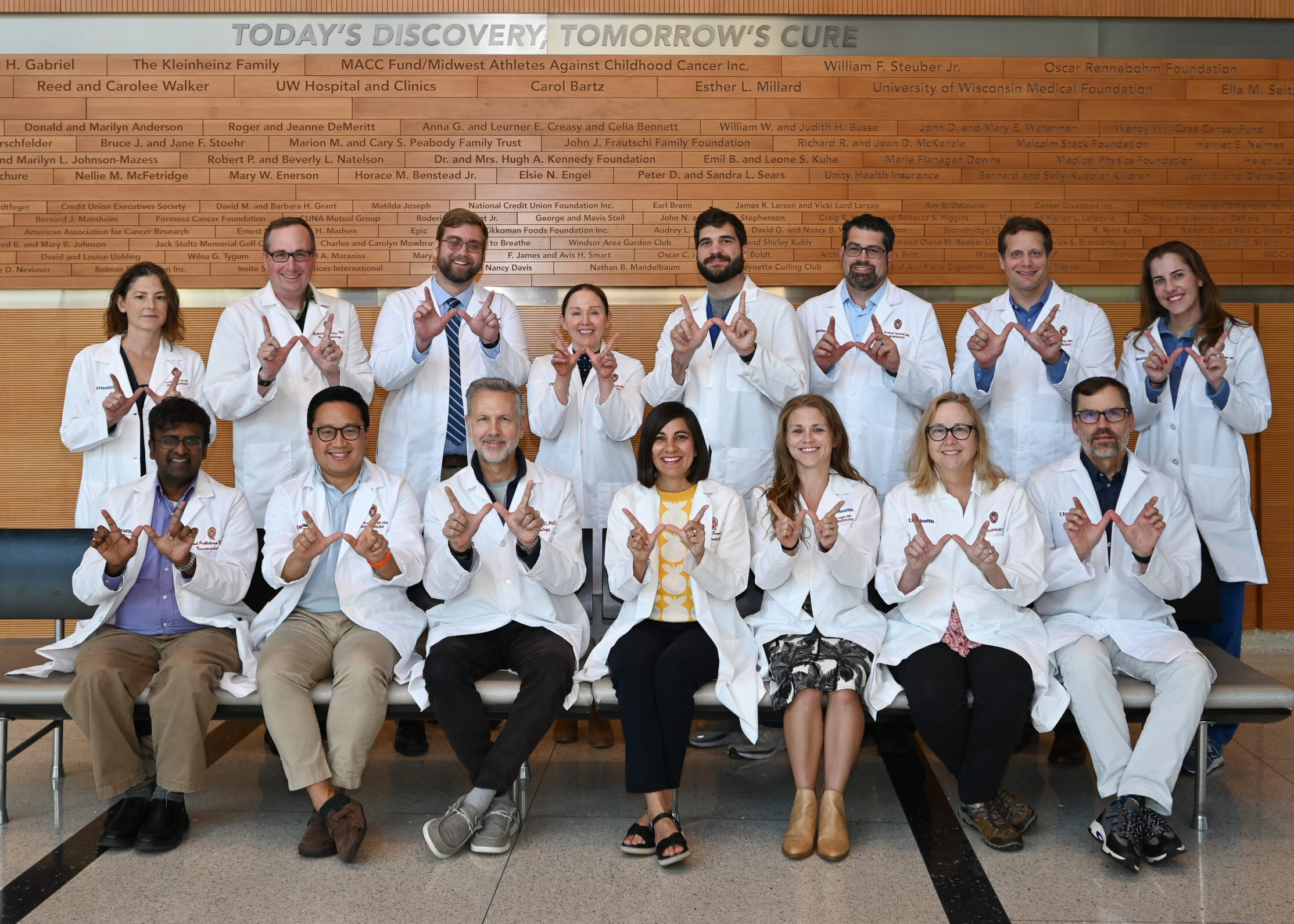
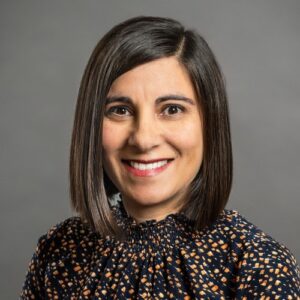
Research Opportunities
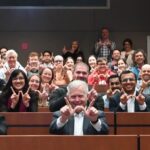 Zachary Clark Radiology Research Symposium
Zachary Clark Radiology Research Symposium
Held in spring, the annual symposium celebrates the high-caliber radiology research conducted by our fellows, residents, and medical students.
There are many clinical imaging research opportunities available to Neuroradiology fellows. They encompass radiomics, radiogenomics, 4D vascular flow imaging, functional connectivity, CSF flow analysis, dual-energy and low-dose CT techniques, integrated PET/MR, intraoperative MR, and a variety of quantitative MR techniques.
The department’s internationally renowned research programs are shining embodiments of discovery. Our department played a pivotal role in earning the Wisconsin Biohealth Tech Hub designation and is on the forefront of the transformative work it funds. Our research programs and labs are innovating in such areas as machine learning, ablation and molecular imaging. Our collaboration with industry means we’re helping to build tomorrow’s technology through efforts such as evaluating GE HealthCare’s photon counting CT scanner. Our resources provide support in statistics, IRB, grant administration and study coordination.
A key element of our research efforts is partnering with our clinical enterprise to accelerate translation of discoveries into widespread clinical practice.
From helping with the research to presenting it on the national stage, opportunities to engage in research abound for fellows!
Life in Madison
Make yourself at home! Madison ranks as one of the best places to live, work, play and raise a family.
Whether you’re looking for a night out at vibrant venues filled with live music or a peaceful day in a park with family, Madison has you covered. And while kicking back to enjoy the sunset on the Memorial Union Terrace is a winning option, there’s also recreational activities like biking, kayaking and skiing to keep you active.
Head over to Destination Madison to discover events, restaurants, recreational activities and more. Your new home awaits!










